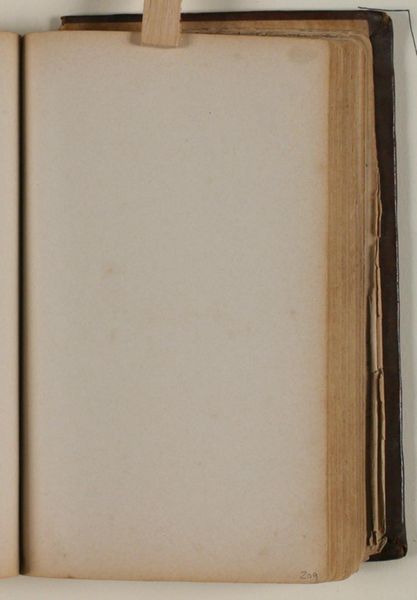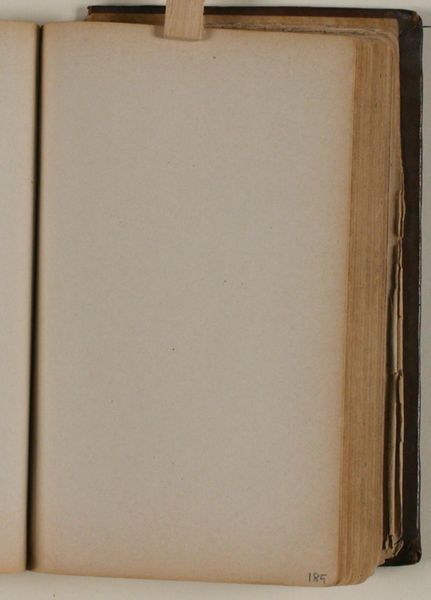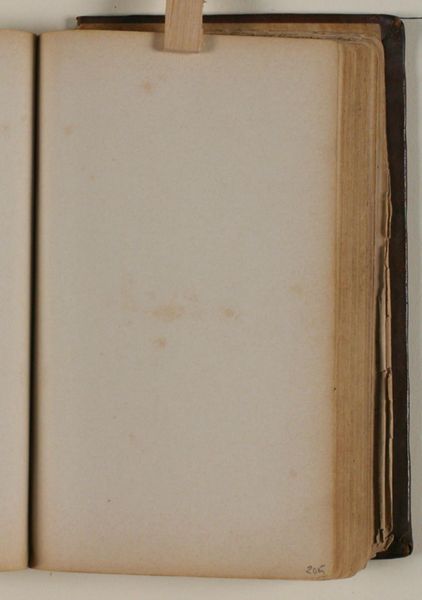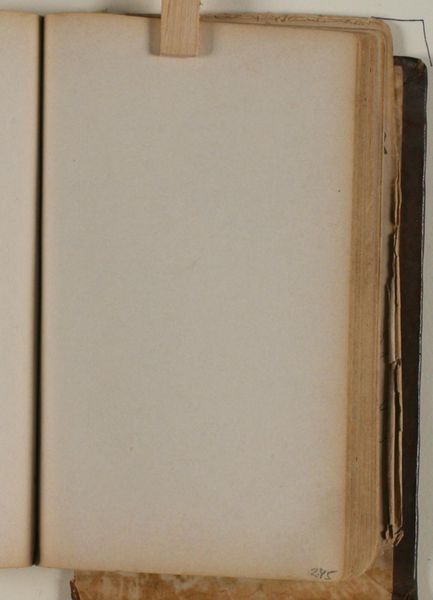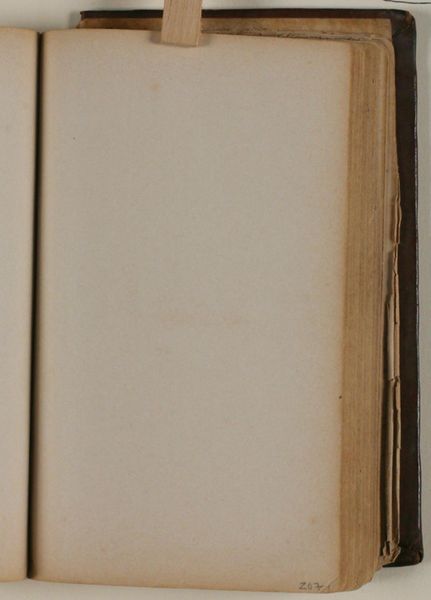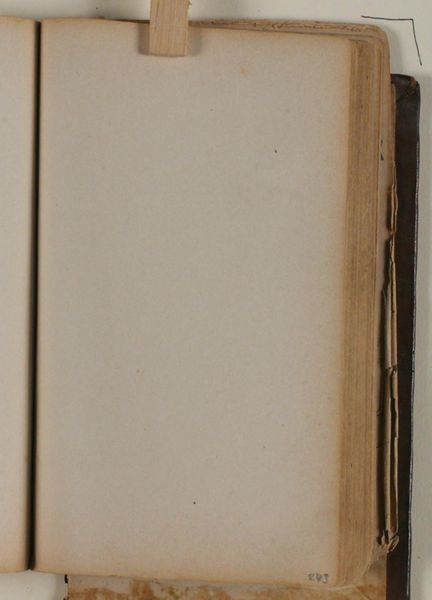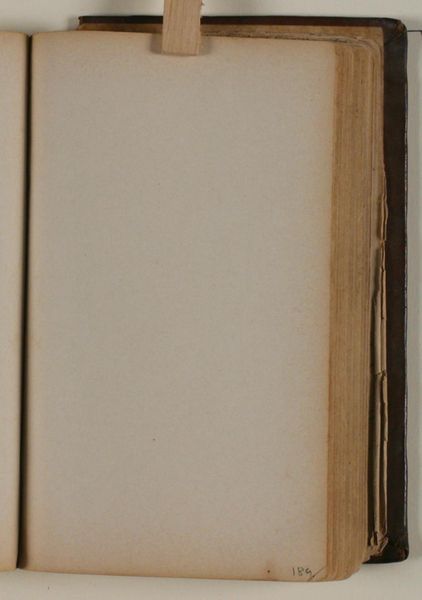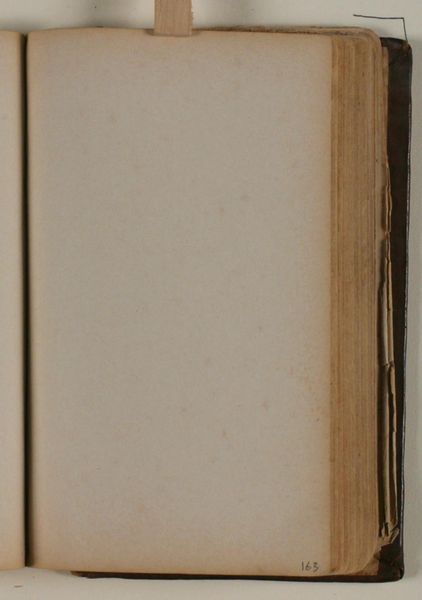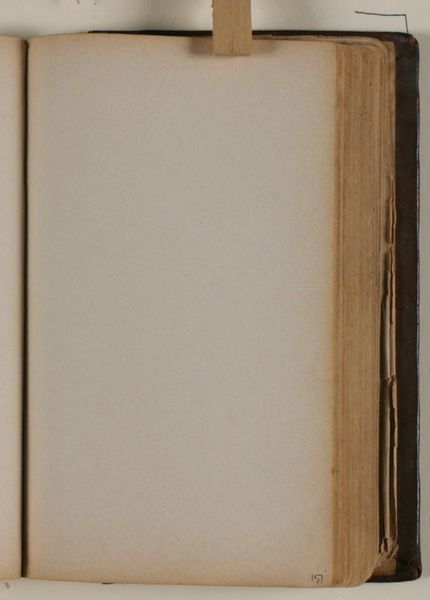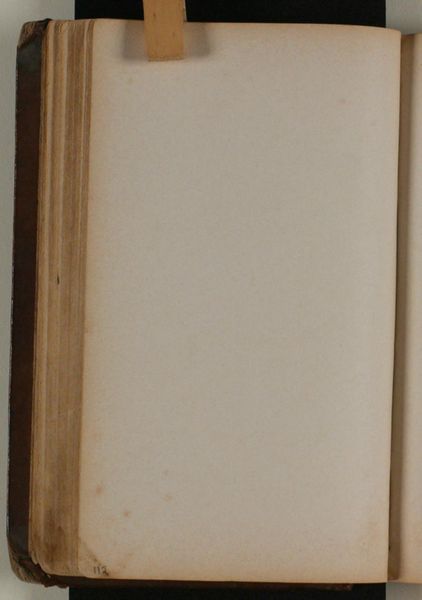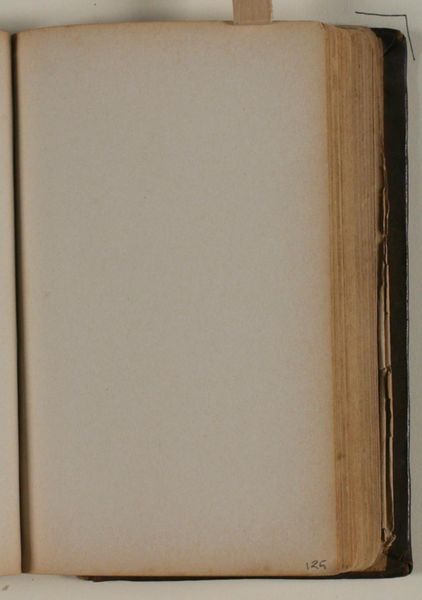
drawing, paper
#
drawing
#
paper
Curator: Here we have "Blank", a work by Niels Larsen Stevns created sometime between 1864 and 1941, now residing here at the SMK, the Statens Museum for Kunst. It’s a drawing on paper. Editor: My immediate impression is… quiet. And filled with potential. It's the raw material of a book; it could be anything. I feel an immense sense of possibility, almost intimidating in its emptiness. Curator: The politics of blankness, you might say? Given Stevns's life, this could signify various things. He lived through periods of intense social and artistic upheaval, but did the lack of markings provide him an artistic relief and freedom, or maybe a silencing from external sociopolitical pressures? Editor: Absolutely. We have to remember that a blank page is never truly neutral. The very act of choosing *not* to fill it is a statement. It’s about power dynamics too, of who gets to write the narratives and whose voices are silenced. The societal constraints or creative repression, even. What are the conditions and institutional biases around it? Curator: Precisely. Think about the historical context – this period was a time when national identities were being asserted, artistic movements were battling for dominance, with traditional styles fading from view. Stevns must have been affected by the cultural forces surrounding him. In order to see the larger impact in this work, it demands attention, like many others that sit inside gallery walls and storage areas that have historical ramifications, for sure. Editor: And even the material itself – paper. Its history, production, accessibility. Who had access to this medium, who was excluded? We can understand the relationship of the page's history to modern movements. To echo your comments about its implications – who was silenced or excluded from these same gallery and museum spaces over the same timeframe? Curator: Right, the inherent value placed on blankness is determined through a series of power systems. We're invited to reflect on what gives something—or someone—meaning. And how readily are those opportunities available today versus at its creation? Editor: So, rather than seeing nothing, maybe we should focus on this "Blank" as a reminder of unfulfilled intentions. It can serve as an important catalyst to examine silences within a societal narrative. Curator: Yes, the perfect work for the ongoing journey towards broader art representation within both history and museum culture, which are frequently linked, I feel.
Comments
No comments
Be the first to comment and join the conversation on the ultimate creative platform.

